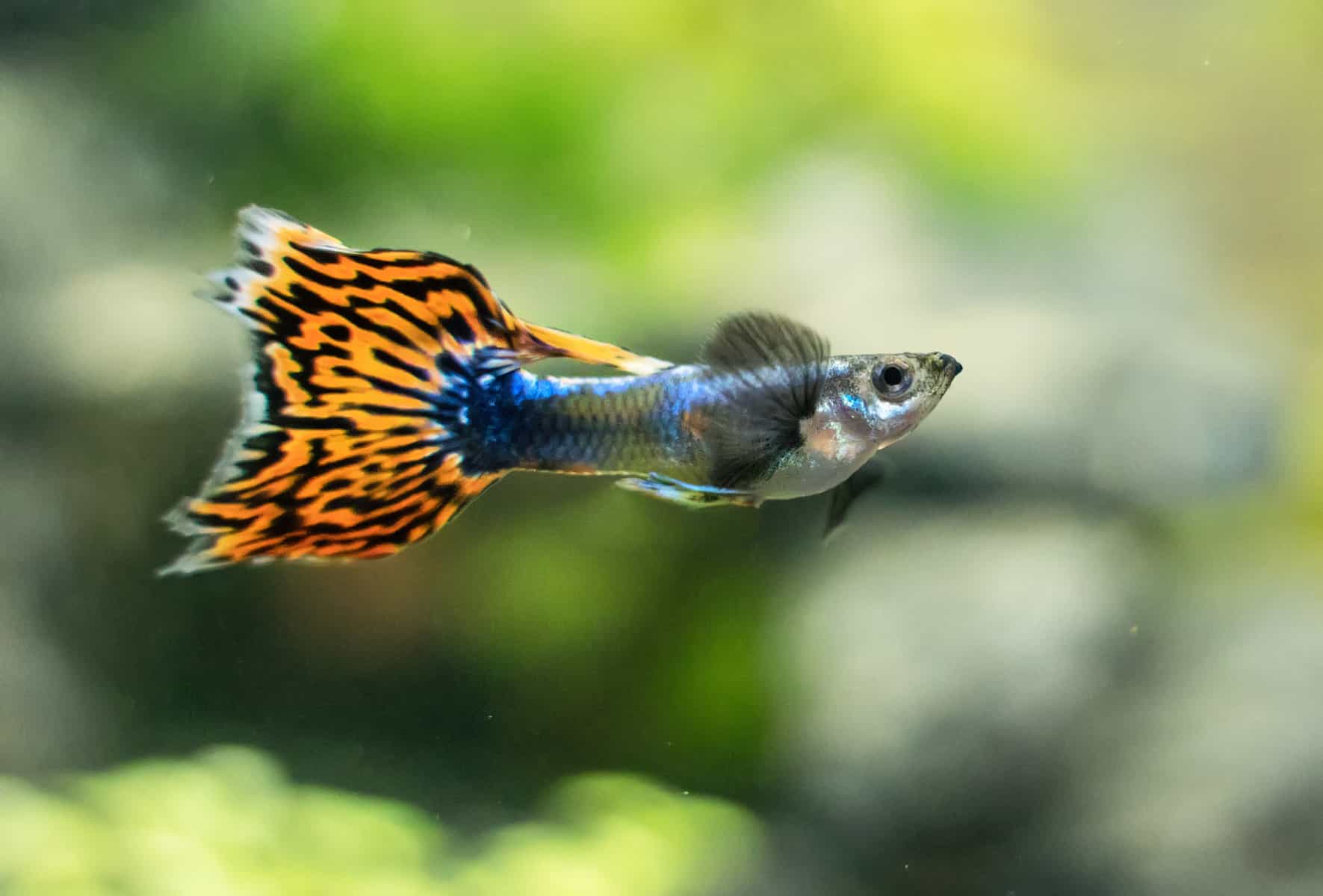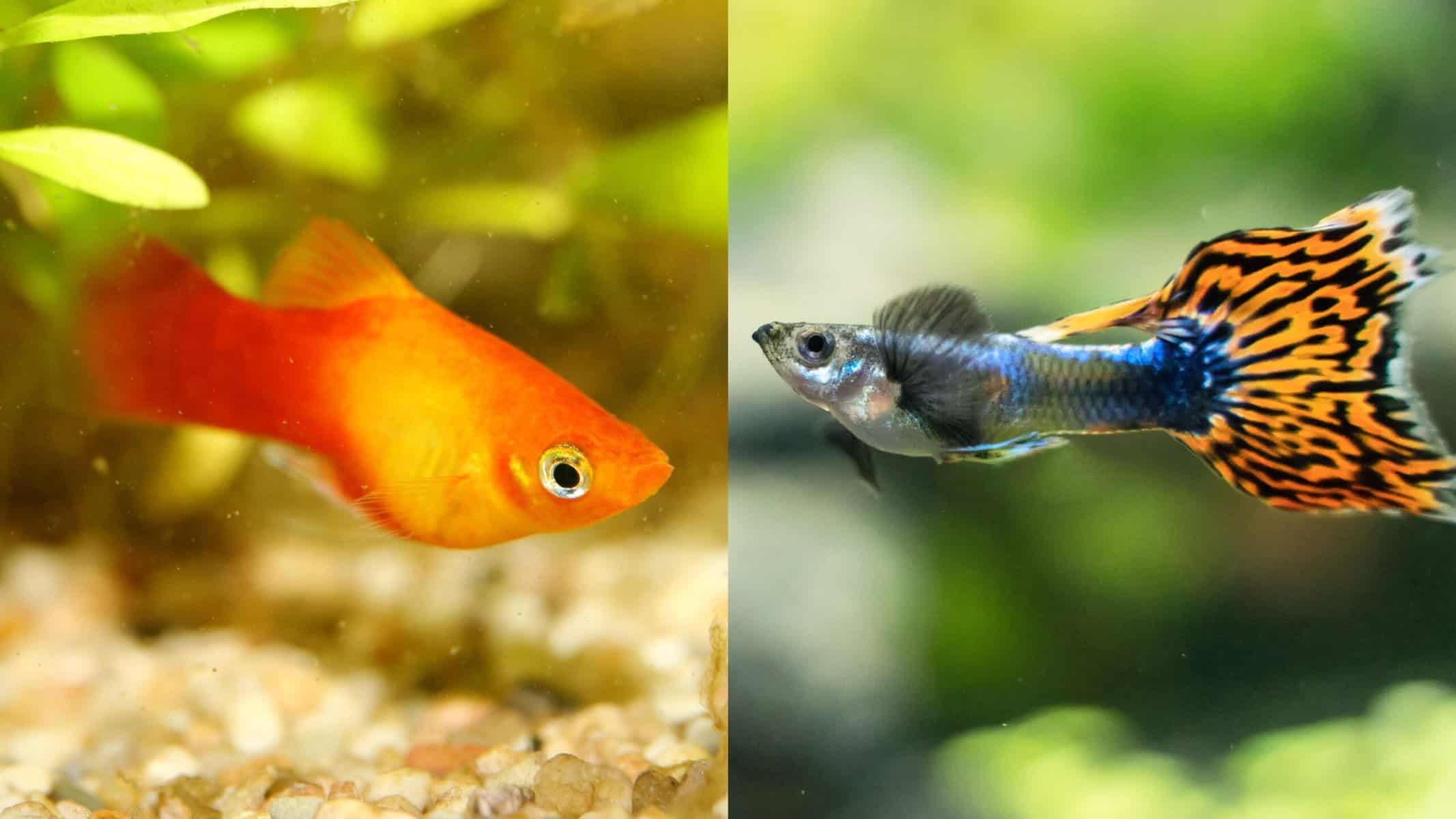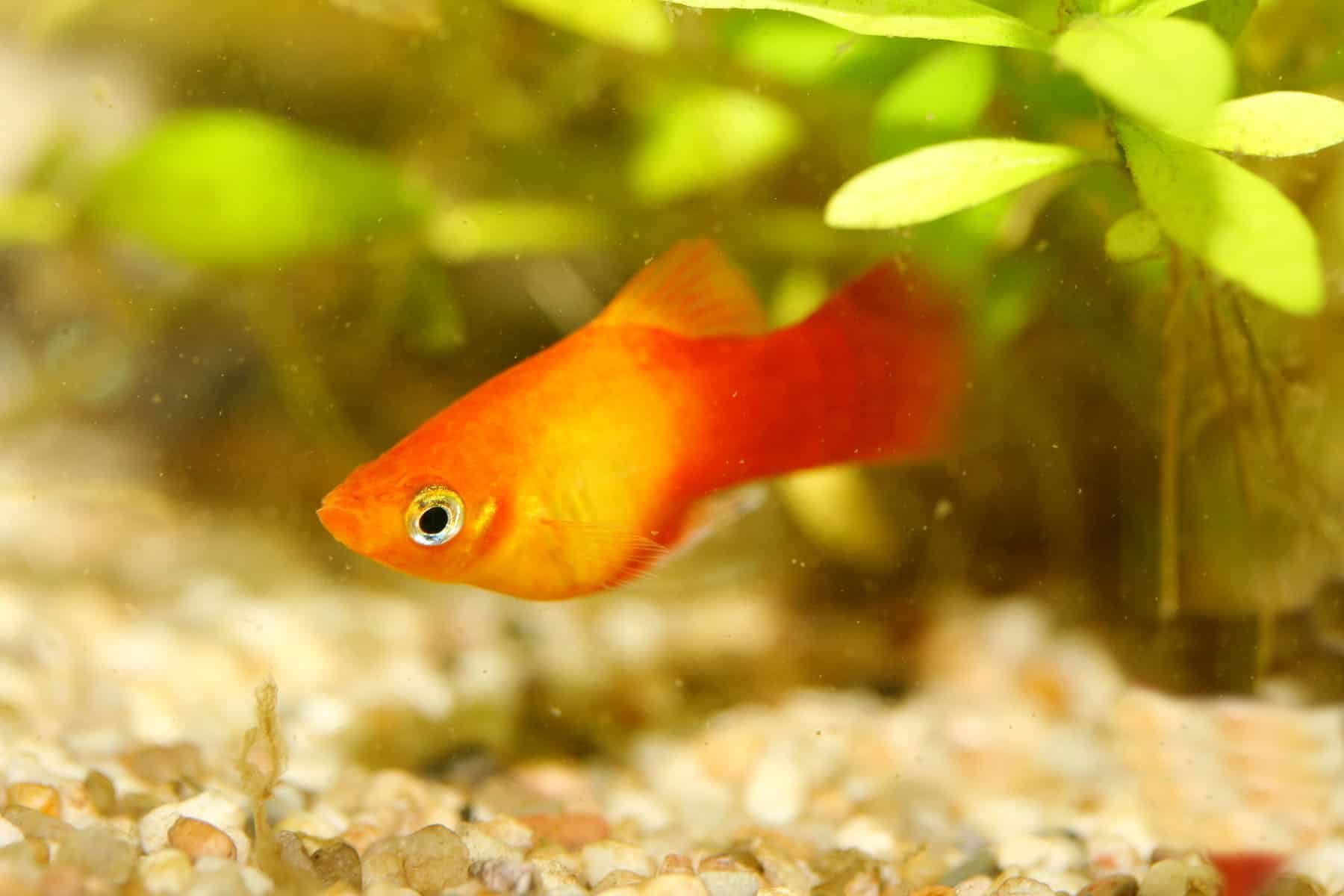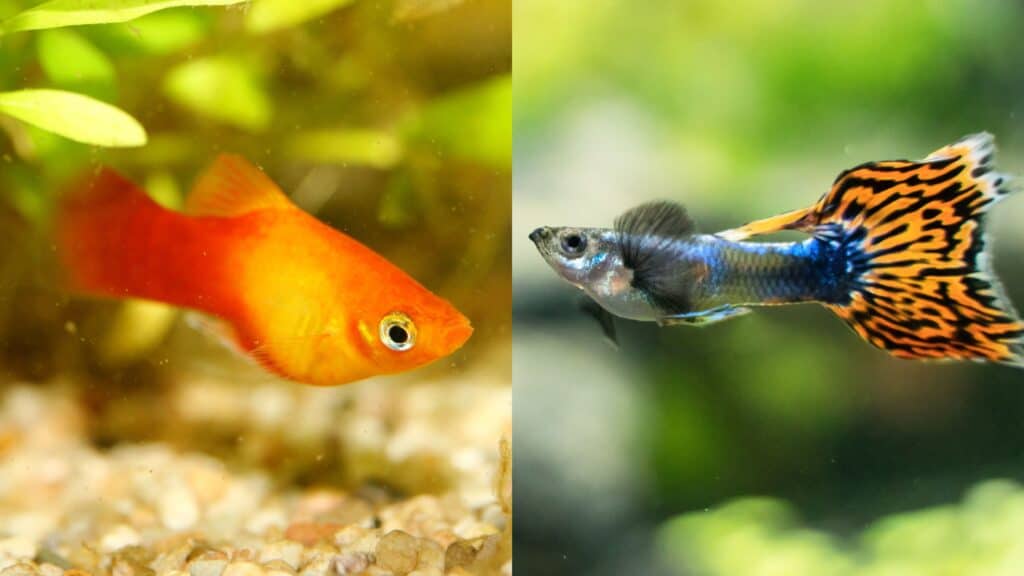Guppies and platies are both beautiful types of livebearer fish. These stunning species both make for not only excellent pets of their own accord but also beautiful tankmates for a community tank.
While they’re of different species, these two have many similar requirements and can be found living together in harmony in many home aquariums.
So, if you’re thinking of setting up a community tank with one of these two as the main attraction, read on to find out their similarities and differences, which may be a better choice for you, and which other species they can be housed with comfortably.
Are Platys and Guppies the Same?

Platies and guppies are both gorgeous species of livebearers, which may lead many novices to think that they could be related, or at the very least, be able to breed with one another.
If you plan on housing both platyfish and guppies together, however, you may be happy to know that guppies and platies cannot crossbreed as they’re from two different families.
Guppies are from the Poeciliidae family, whereas platies are from the Xiphophorus family.
So, if you do spot a baby or two milling around in your community tank, it will be from one or the other – don’t get excited, it’s likely not the fish incarnation of the baby Jesus.
Are Guppies or Platies Better?
This is a question that gets asked a lot online – mostly when people are trying to decide which to stock in their tank. But really, there’s no short answer to this question.
Which is better to look at? Which is better in terms of ease of care? Which is better at being friendly? The list goes on.
Generally speaking, though, we put our pet fish on display because of how they look, and with platyfish and guppies having such similar care needs (they can comfortably cohabit as if they were of the same fish species), it ultimately comes down to looks to figure out which makes the better addition to your own tank.
Platyfish have some very outstanding colors and pattern varieties. However, they are typically known for their compact bodies with rounder, smaller fins.
Guppy fish can be a little more varied in comparison, as platies typically don’t display much variation from one another in terms of their fins
Platies do typically live a little longer than guppies, which is often another deciding factor for many people.
Although I personally prefer guppy fish, it’s heartbreaking when any pet dies, so wanting to get one that may have a longer life expectancy is completely understandable. They can typically live for around 3 years, sometimes even 4 years given good enough care.
Can Platy Live With Guppies?

Being such similar active fish, with similar care requirements, keeping platies and guppies together is a really good choice and one I would definitely recommend for those just starting out with community tanks.
These different breeds of fish are both livebearers, and although from different families, they require very similar water conditions and food. This means that they can comfortably live together without much extra work on your part!
Something that you should keep in mind, however, is that platies are slightly larger than Guppies, and therefore will require a bit more space to swim in, so you should be mindful of this when choosing a tank to set up your new community.
That said, platies and guppies also both live in schools/swarms, so housing just one of each isn’t a good idea, as neither of these fish does well when housed as the only member of their species.
To build a comfortable tank for both types of fish, you’ll likely want a minimum of a 20-gallon tank, with a minimum of two or three fish per species. However, a larger aquarium is always the one to go for.
You should also have a good filtration system setup and regular water changes. As well, your tank should be able to house around 10 – 15 fish in total.
As with any tank, though, the bigger the better – you’ll want to ensure that both your platies and guppies have more than enough space to move around in order to keep all of your friendly fish happy and healthy.
Will Guppies Eat Baby Platys?
When it comes down to one of your beloved platys having babies, you may be concerned that the guppy fish would eat it, or vice versa.
This is a valid concern, as many species of fish naturally tend to eat fry – be it of other fish species or even their offspring!
So, if one of your platyfish has babies, it’s best to keep in mind that any babies produced could potentially get eaten.
In order to combat this, there are a few things you may want to consider, in order to preserve the lives of your tiny new tankmates.
Plants
Adding more foliage to your tank provides the fry with plenty of plants and space to hide and take shelter.
Given enough space to both swim around and hide, it’s likely that a fair few babies will survive using this method.
Net
If you’re looking into breeding your fish a little more seriously, and are more cautious of the offspring being eaten, then you’ll likely want to opt for one of these two methods.
First, adding a net to corner off part of the tank solely for the babies is a good way of ensuring their safety without having to maintain two tanks.
However, if they’re easily visible to fish that may wish to eat them, they may get easily stressed out, so you’ll want to take this into consideration when setting up your tank to house the babies as well.
Breeding tank
Arguably the easiest way of ensuring the safety of your new baby fish is by putting them into a separate tank or breeding box.
While this may give you the extra task of maintaining two tanks, it makes preserving their little lives much easier and more stress-free!
What Common Fish Can Go With Platys and Guppies?

As we’ve discussed, platies and guppies make excellent tankmates, and they’re an ideal pairing of groups to house as part of a community tank.
Both of these species can also be housed with some species of catfish, mollies, swordfish, and tetras, all of which complement the peaceful nature of the platies and guppies.
So, if you’re looking to stock an even bigger tank – opting for the addition of a couple of these species is a great way to go!
How to Care for Platys and Guppies
Food
Platyfish and guppies are both omnivores, so they thrive on a diet of live foods, such as brine shrimp, and commercial fish foods like high-quality flakes and pellets, ideally with high protein content.
These should be given alongside foliage and live or frozen foods in order to ensure a healthy balance of nutrients.
This balanced diet ensures that all of your fish are kept happy and healthy. However, bear in mind that guppy fish are typically a little pickier than platies.
Therefore, you’ll want to watch your fish carefully and check that both species are eating when introducing new fish foods.
If your fish aren’t eating enough, this can result in digestive issues, which can be detrimental to the health and well-being of your fish.
Water Parameters
In order to ensure both fish species are happy, you’ll need to check the aquarium water to ensure that the temperature, pH, and, dgH are all comfortable for the fish in your aquarium.
You’ll need to keep an ideal temperature of the water between 72 and 78 degrees Fahrenheit. Even though guppies can comfortably tolerate temperatures of up to 82 degrees Fahrenheit, platys cannot.
Therefore, keeping the water temperature a little lower is a sure way of keeping all of your fish happy.
A happy medium of pH should be between 7.0 and 8.0 pH.
10 – 12 dGh is also ideal. This is the particular factor where both species have such different needs, so you should be careful to not harm one or the other by dropping the dGh too low or raising it too high.
You can help to keep these stable by using a water conditioner, which will help to balance the pH and dGh of your water.
Tank Size
In terms of tank size, as I stated before, you’ll need enough space to house a small group of each species of fish.
You should aim to house around 10 fish in a 20-gallon tank, although a larger tank is always the better option.
So there we have it, two unique species that can live together in harmony!
If you’re considering starting up a community tank with these species, I would highly encourage it! They’re both calm, peaceful fish and are well known for being pretty, and having similar requirements makes taking care of them a breeze.


